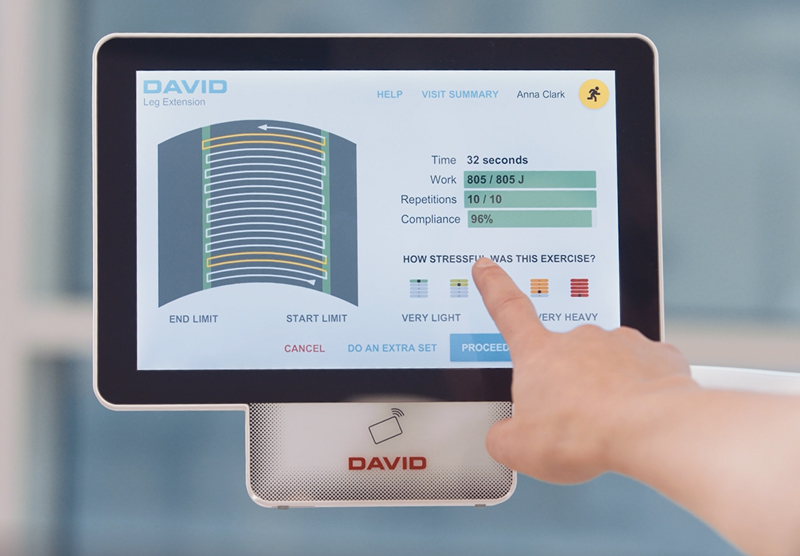Research - Validation Studies - Hip and knee equipment
Scientific Evaluation of Specific Loading of the Knee Extensors with Variable Resistance, ‘Isokinetic’ and Barbell Exercises.
Year: 1987 Country: Finland Study Population: N=5
Häkkinen K, Komi PV, Kauhanen H. Scientific Evaluation of Specific Loading of the Knee Extensors with Variable Resistance, ‘Isokinetic’ and Barbell Exercises. Med Sport Sci. 1987;26:224-237.
Objective
To compare the knee extensor muscle, muscle activation and force production characteristics during various voluntary contractions using variable resistance (VR) exercise device (David 200), isokinetic device and barbell squat.
Methods
David device (VR): Concentric (maximal 1 RM), eccentric (100 %, 110 % and 120 % of the concentric, 1 RM) and isometric testing was performed.
Isokinetic device: maximal extension against the resistance bar which was moved with a constant velocity. The performance closest to that of the maximal one-repetition concentric extension with David device was taken for the analysis.
Maximal barbell squat: full squat down to 70 degrees. Last successful one-repetition attempt was taken for the analysis.
Outcome measures: Force, knee angle and EMG-signals of the various tests were recorded.
Outcome
The force-angle relationship during the contractions performed with David device had a great resemblance to that of the normal ascending descending curve in concentric and eccentric contractions. The muscle activation of the knee extensors during the maximal concentric contraction with David device stayed maximal level throughout the entire knee angular movement and was higher than the activation during the maximal isokinetic contraction. The muscle activation in the maximal barbell squat exercise was "maximal" and the same as the activation with David device only at small knee angular position.
The findings suggest that variable resistance may create optimal conditions for high muscle activation throughout the entire joint movement, especially during maximal concentric loading.
